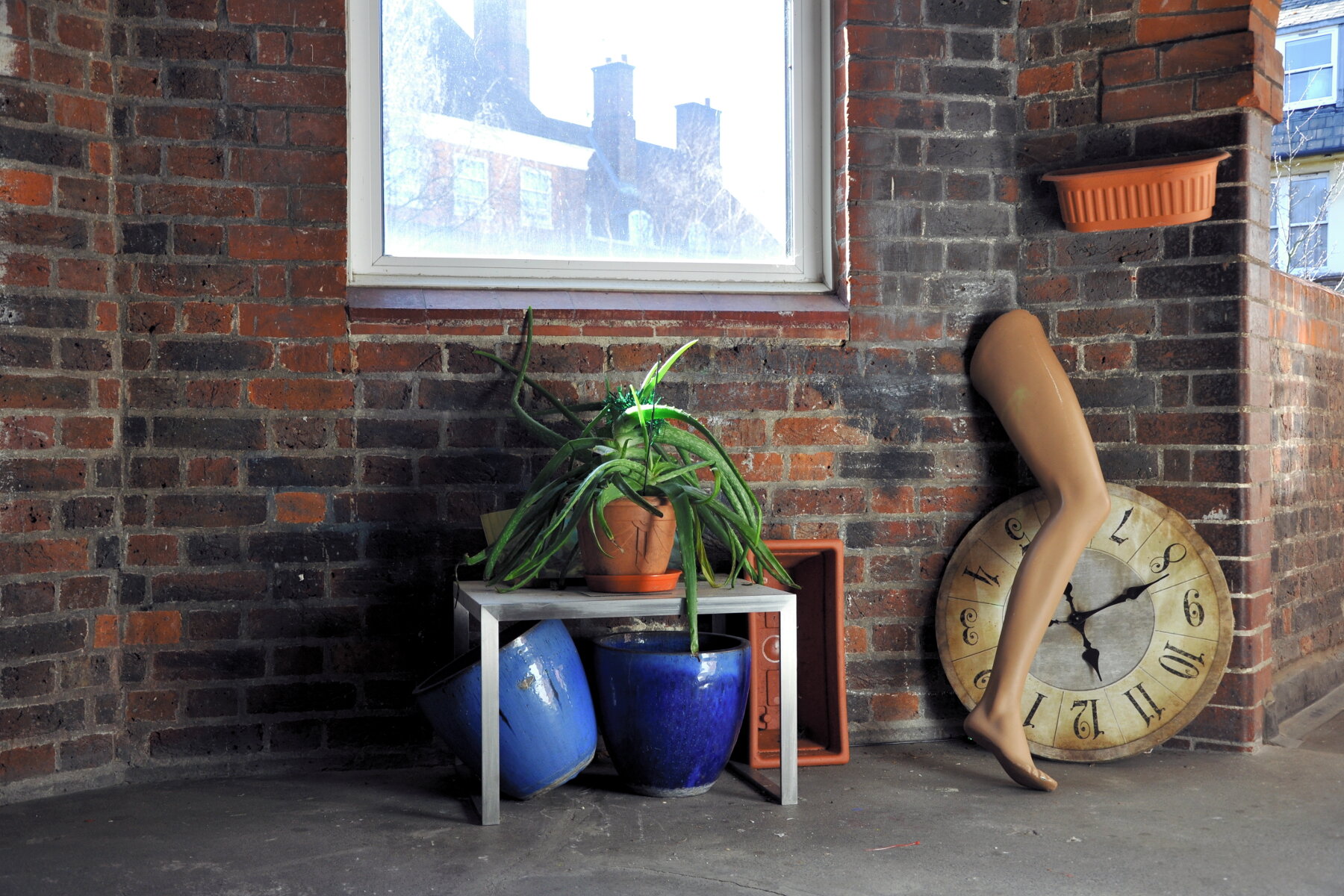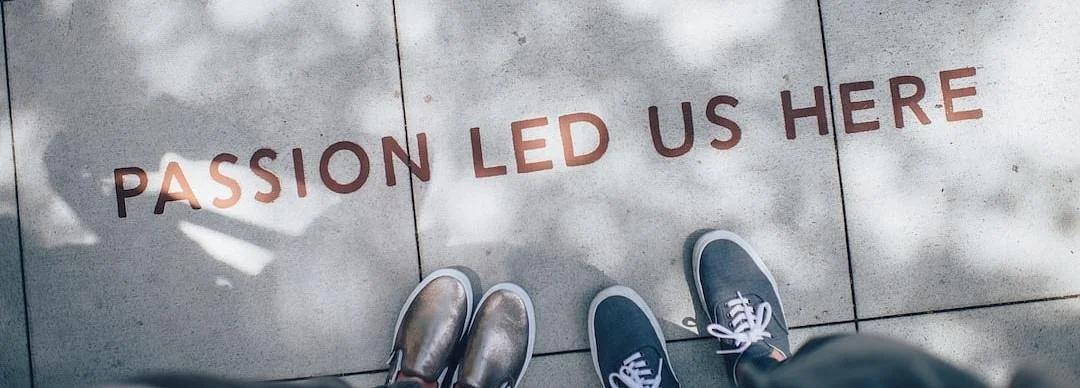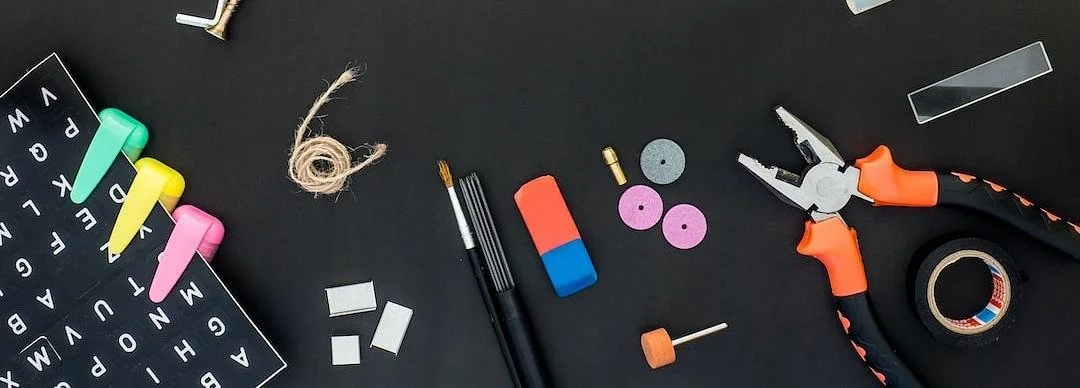The Oxenham House Neighbourhood Project (2014)
By
Anita Strasser
A neighbour's intervention on the 2nd floor landing, including plant pots, a clock and a mannequin’s leg. Photo credit: Anita Strasser.
Using photography, story-telling, gardening and other collective activities to facilitate social cohesion among neighbours
The Oxenham House Neighbourhood Project was about facilitating the social processes that create the affective nature of community spirit. Trust, familiarity and a sense of belonging are inextricably linked to frequent informal social bonds and a shared dialogue among neighbours, and this project created the opportunities to build up social ties through repeated encounters, participatory research and collective action.
Neighbours had been complaining about the lack of neighbourly contact, lack of respect and familiarity with each other, and the state of the building and communal areas. People wanted to have plants and flowers in the communal spaces, have the odd coffee morning, a bit of collective gardening and looking after the place, but above all, acknowledgement of each other and a bit more community spirit. This project involved creating opportunities for repeated encounters in the communal areas first by having coffee breaks, watering plants, and then by engaging in Tactical Urbanism – a way of beautifying space through small-scale subversive activities.
Through the repeated encounters more conversations took place, which built up familiarity and trust and helped identify common issues and wishes. I then invited all neighbours to participate in a photography and story-telling project (11 out of 17 households did) and to co-produce images and texts which were then shared with all in an exhibition/neighbours’ gathering on site. This meeting and sharing was intended for people to get to know each other, build up familiarity and trust, and to perhaps engage in future collective action. I also organised a gardening day to address the wish to beautify the courtyard, and together we transformed our courtyard, which was of great importance to our community.
The community spirit felt on that day became part of our community memory – of tales to be relived and retold. The need to maintain the garden as well as the need to contact the council for maintenance also created further opportunities to meet, engage and to have a sense of common purpose. All the work - portraits, photographs of our activities, texts and stories were put into a booklet that was given to all the residents.
Since the project, neighbours have commented on how different they feel about living here. People are familiar with each other and a lot more chatter and laughter can be heard from the communal areas. People have reported that they feel safer in the block and that they enjoy the feeling of knowing their neighbours.




